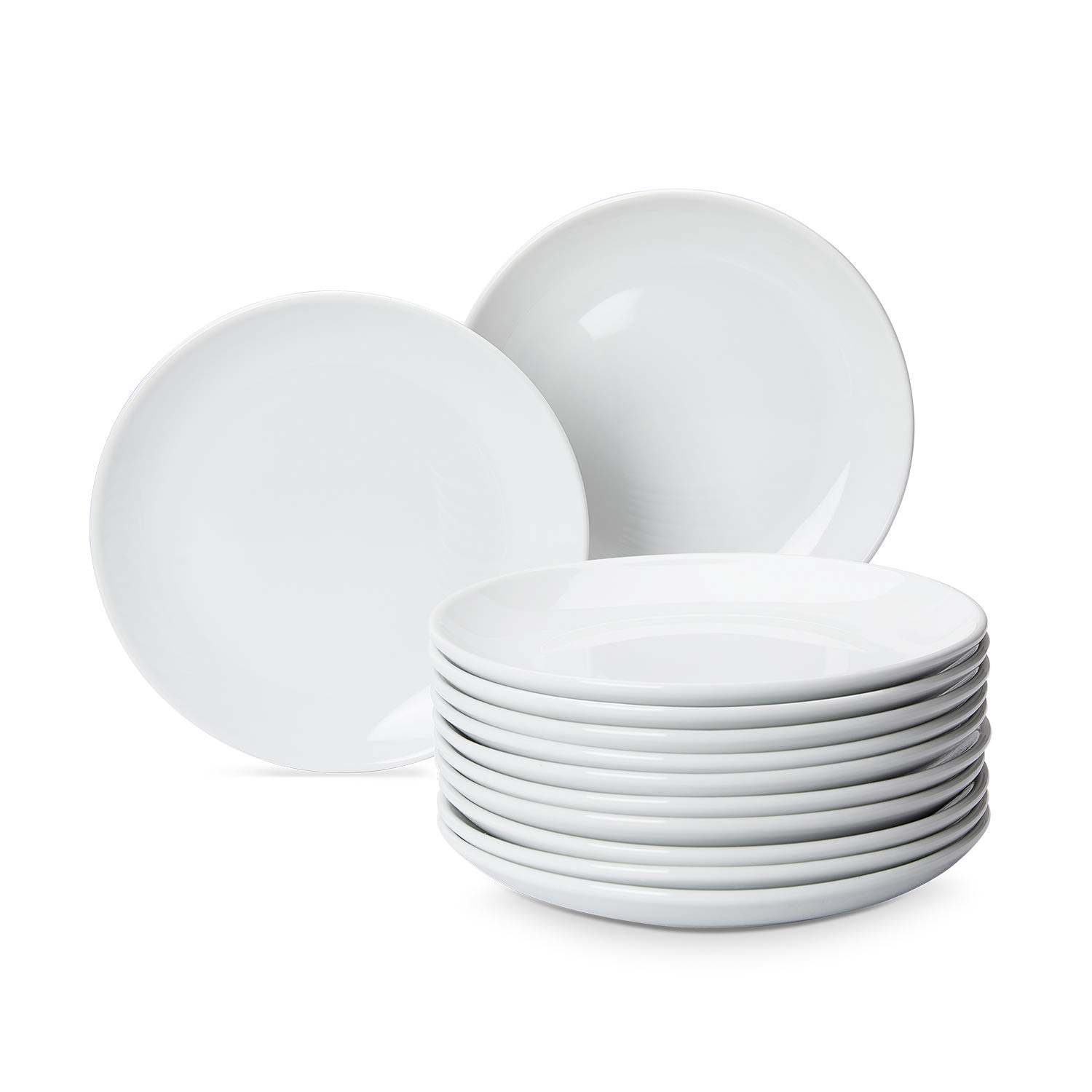What is the Difference Between a Plate and a Dish?
Time of issue: 2023-08-23 10:40:27When it comes to the world of dining and tableware, the terms "plate" and "dish" are often used interchangeably, leading to some confusion. After all, both items play a crucial role in the presentation and consumption of food. However, a closer examination reveals that these terms hold distinct meanings and refer to specific elements of the culinary experience.

Defining Plates and Dishes
A plate is a familiar item found in virtually every household and restaurant. It's a flat, circular or oval-shaped piece of dishware that serves as a foundation for presenting and consuming food. Plates can come in various sizes, from small saucers to large dinner plates, and they can be made from a range of materials, including ceramic, porcelain, glass, plastic, and even metal. The design of plates can vary from minimalist and contemporary to intricate and ornate, depending on their intended use and the overall aesthetic of the dining experience.
On the other hand, the term dish has a broader and more inclusive definition. While a plate is a specific type of dish, the term "dish" encompasses a wider variety of food containers used for cooking, serving, and storing. Beyond plates, dishes also include bowls, platters, casseroles, and other receptacles that aid in meal preparation and presentation. These items can vary greatly in size, shape, and material, making them versatile tools for different culinary needs.
Understanding the Nuances
The primary distinction between a plate and a dish lies in their intended use and the specific items they refer to. A plate is designed as a flat and shallow surface on which food is arranged for presentation and consumption. Its purpose is to showcase the food's visual appeal and allow for easy cutting, serving, and eating. Plates are the staple of table settings, and they provide the canvas upon which culinary creations come to life.
In contrast, a dish is a more comprehensive term that covers a spectrum of food containers with varying functionalities. While plates are crucial for serving main courses, side dishes, and desserts, bowls are better suited for soups, salads, and foods with higher liquid content. Platters are ideal for presenting larger quantities of food, making them perfect for family gatherings and events. Casserole dishes, designed for both cooking and serving, bridge the gap between functionality and aesthetics.
Navigating the Usage
In everyday conversations, people might use "plate" and "dish" interchangeably without any significant confusion. However, understanding the subtle differences between these terms becomes essential in the realms of culinary etiquette, food presentation, and professional cooking. When discussing matters such as setting a formal table, selecting appropriate serving ware, or appreciating the art of plating, knowing when to use "plate" and when to use "dish" can enhance one's ability to communicate precisely.
In Conclusion
While the terms "plate" and "dish" might seem interchangeable at first glance, they hold distinct meanings that reflect their specific roles in the culinary world. A plate serves as a foundational surface for presenting and consuming food, while a dish is a broader term encompassing various food containers used in cooking and serving. This nuanced understanding contributes to a deeper appreciation of the art of dining and the careful consideration that goes into the presentation of food.
RECENT POSTS
- The Benefits of Wholesale High-Quality Ceramic Products for Retailers
2025-12-17
- Can You Make an Ashtray with Air Dry Clay? Pros, Cons, and Safer Alternatives
2025-12-17
- The Impact of Ceramic Materials in Energy-Efficient Buildings: Benefits and Applications
2025-12-04
- Top 7 Ceramic Cookware Health Benefits: Why It’s a Safer Choice for Your Kitchen
2025-12-04
- How to Clean Ceramic Planters and Improve Their Lifespan?
2025-11-17
- 15 Best Ceramic Holiday Gift Ideas for 2025: Thoughtful, Elegant & Heartfelt
2025-11-17
- Stoneware vs Porcelain vs Earthenware: Quick Decision Guide
2025-10-09
- Are Ceramic Glazes Food Safe? The Truth Behind the Shine
2025-10-09










